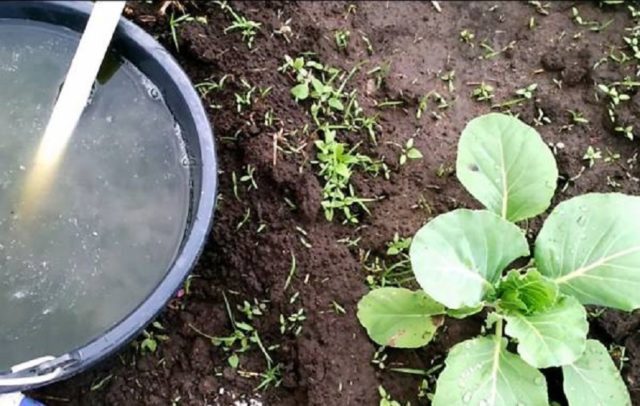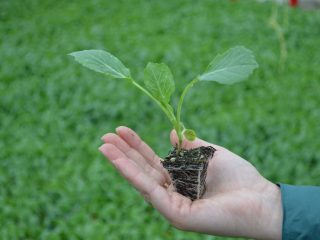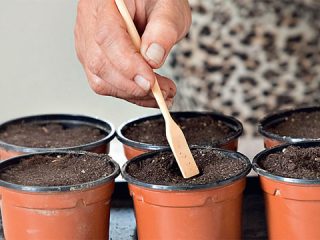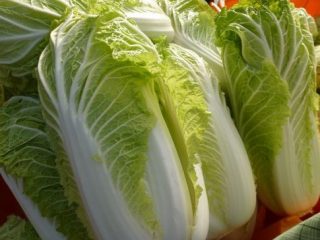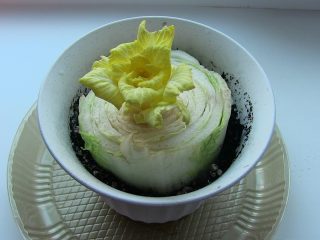Content
Crumont cabbage is a late-ripening variety and has a lot of worthy characteristics. By growing the hybrid on their plots, summer residents and farmers receive a high yield of healthy vegetables. The description of the variety and the list of agricultural technology requirements are always relevant for beginners and experienced farmers.
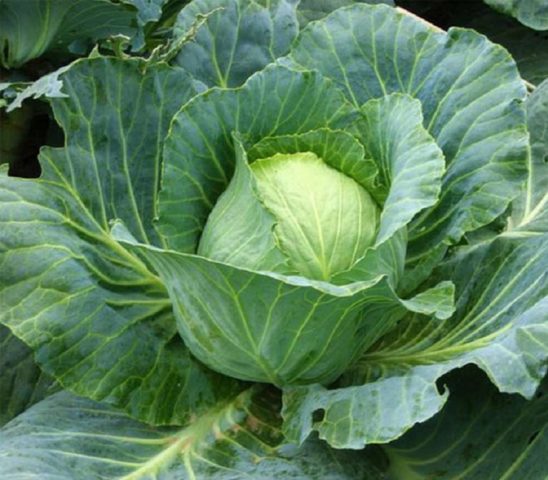
To prepare cabbage dishes all winter, you should grow the Crumont variety.
Description of Crumont cabbage
Important parameters when choosing a cabbage variety are ripening time, yield and taste characteristics. Hybrid Krumont F1 meets the highest requirements of vegetable growers. It was developed by Russian scientists from the Timiryazev Agricultural Academy and has been on the State Register since 1992. The unique variety is allowed to be grown in all territories of the Russian Federation, except for the North-Eastern and Northern regions.
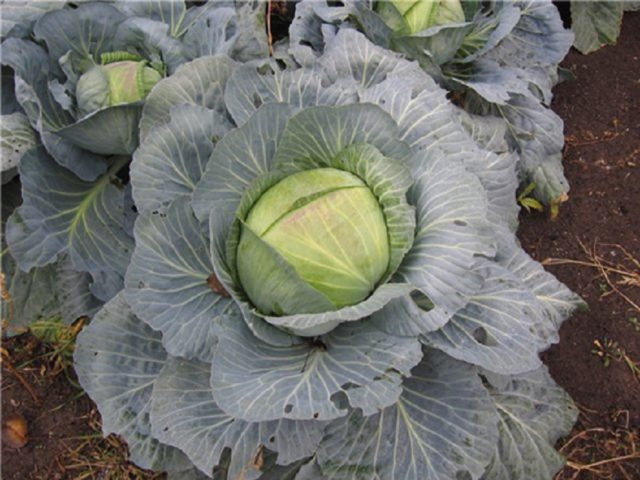
The density and alignment of the heads give the variety commercial value
Main parameters:
- Ripening period is late. From the first shoots to harvesting, 165-170 days pass.
- The socket is semi-raised, very compact. Height from 45 cm to 60 cm, diameter from 60 cm to 75 cm, number of leaves from 25 to 32 pcs.
- The head of cabbage is medium in size and very dense. The shape is leveled, rounded-flat or rounded.Crumont heads are resistant to cracking, smooth and morphologically even. The color of the outer leaves is dark green, with a pronounced shade of gray, while inside, when cut, it is almost white. The weight of one head of cabbage ranges from 1.9 kg to 2.2 kg. In the southern regions, vegetable growers remove 4 kg heads.
- Cabbage leaf blades are smooth, the edges are wavy-toothed. The lower leaves have a petiole 6 cm long. The venation of the leaf resembles the shape of a half-fan. Leaves length 55 cm, width about 40 cm.
- The outer stump is medium in size - from 18 cm to 23 cm. The inner stump is thin and much shorter (up to 10 cm).
A very important characteristic is the ability of the Crumont variety to be collected and processed by mechanization. Another factor is stability during transportation and excellent shelf life.
Pros and cons of Crumont cabbage
To understand the advantages of a hybrid over other varieties of cabbage, you should group its advantages and note its disadvantages.
The advantages of Krumont F1 are:
- excellent taste;
- rich nutritional composition;
- alignment, compactness and density of heads;
- high immunity to diseases;
- ability for long-term storage (6-7 months);
- no cracking of fruits;
- versatility of application;
- the possibility of industrial cultivation and the use of harvesting equipment;
- ease of care.
Disadvantages of the variety:
- the presence of a bitter aftertaste, which disappears 2-3 months after harvesting from the field;
- small volume of heads for a late-ripening variety.
The first disadvantage is due to the biological specifics of the hybrid, but vegetable growers do not always consider it a disadvantage.
Productivity of cabbage variety Crumont
When planted on a summer cottage, the yield of the Krumont hybrid ranges from 5 kg to 7 kg per 1 sq. m.For industrial cultivation, indicators range from 4.1 kg to 5.1 kg per 1 sq. m.
Planting and caring for Crumont cabbage
It is recommended to grow the variety in seedlings. In this case, late-ripening cabbage has time to form heads even in regions with a cool climate. Sowing seeds should begin in February in more southern areas and in April in the north.
The germination rate of cabbage is high (up to 90%). The first shoots appear within a week. Before germination, the room temperature should be within + 20-24 °C. Then the value is reduced to + 15-18 °C (daytime) and + 8-10 °C (nighttime). During the period before planting in open ground, you need to monitor the quality of watering and feed the seedlings once with a mineral complex.
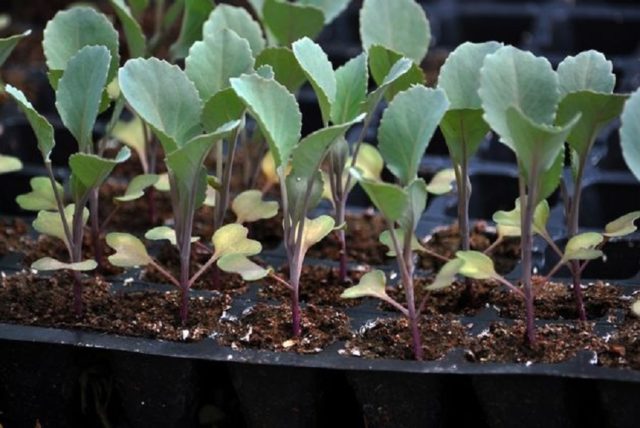
Proper care of seedlings will allow you to obtain healthy planting material
The planting date for sowing is the end of April or the end of May. Seedlings should have 2-3 pairs of leaves. Planting pattern of the variety is 50 x 60 cm, depth 5 cm.
Crumont cabbage does not require special growing conditions. All events are standard:
- Watering. At least 1 time every 2-3 days for adult plants. Young seedlings need to be watered every day. Water – warm, volume of at least 3 liters per plant. The most abundant watering is needed in the head setting phase; before harvesting, it is stopped 14 days before the due date.
- Feeding. Two meals a day per season is enough. The first time you need to add organic matter 20 days after planting in open ground. 2 kg of humus per 1 square meter is enough. m, the second time you need minerals - superphosphate (20 mg), potassium nitrate (30 mg). They are diluted in 10 liters of water and 2 liters of solution are poured under each plant.
Fertilizing the Crumont variety is necessary to increase shelf life
- Weeding. Be sure to do this after watering or rain.It is necessary to remove all weeds so that they do not interfere with the development of cabbage seedlings.
- Hilling. Necessary to stimulate the growth of additional roots. The first hilling should be done 3 weeks after transplanting into open ground, the second – after 14 days.
- Loosening. This event allows you to increase the access of air and nutritional components to the cabbage root system. It is important to carry out the procedure for the first time after the seedlings have taken root, then once a week.
Diseases and pests
The variety was bred with built-in resistance to common crop diseases. Crumont is not affected by clubroot, necrosis (during storage), fusarium, or bacteriosis. If you do preventive spraying, you won’t have to treat the cabbage. Parasites cause more trouble. Vegetable growers have to contend with butterflies, aphids and flea beetles. Copper-containing preparations, for example, Oxychom, work well against aphids. 50 mg of the substance per 10 liters of water is enough, then spray the cabbage after 10 days. The flea disappears after treatment with a solution of potassium permanganate (10 liters of water + 2 mg of powder). Colloidal salt (20 mg per 10 l) can be used against butterflies. Repeated spraying is needed every 7-10 days.
Application
The Crumont variety contains carotene, vitamin C, and a good level of sugar (10%). Such components allow you to use the vegetable in any form - raw, pickled, salted, stewed. After the bitterness leaves the leaves, they are great for winter salads. The shelf life allows you to prepare vitamin dishes all winter.
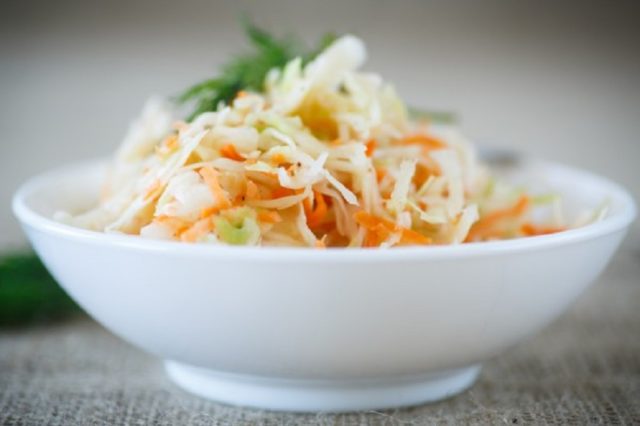
Cabbage dishes nourish the body with beneficial vitamins and amino acids
Conclusion
Crumont cabbage is an excellent choice for growing on a plot and on an industrial scale. The small size of the heads of cabbage is completely covered by the taste characteristics, ease of care and shelf life of the variety.
